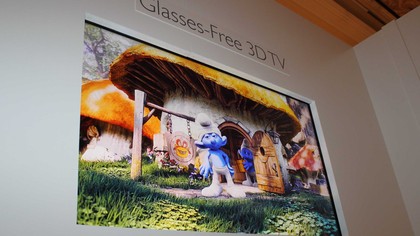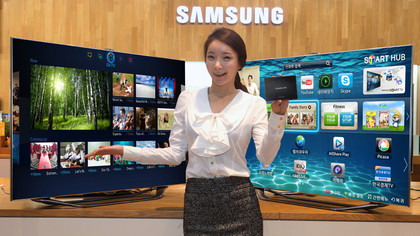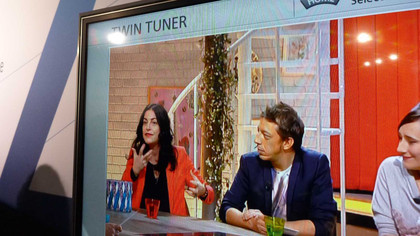The future of TV: water, lasers and voice control
The next big things in TV tech

With its irresistible eight megapixel images, we all know Ultra HD TV is coming, but won't be affordable for yonks. So what else is going on in the world of TVs?
By adding apps, more TV tuners and second screens, upcoming new TVs with a host of useful features could change the way we watch TV.
As well as impressively practical innovations that recognise the importance of tablets and smartphones, the TV manufacturers are also prepping some more far-out prototypes that use water, lasers and even the flailing arms of us poor viewers in the name of entertainment. Roll-on the future of TV.
Is 3D TV dead?

3D has been a flop, and judging by most TV manufacturers' refusal to even mention it when talking about their new 2013 products, it will hence be a forgotten (though largely default) feature.
The problem, of course, is those nasty 3D specs, but their days are numbered. Toshiba's ZL2 is, frankly, merely proof of concept, but Philips has been getting closer to a glasses-free 3D solution if its demo at CES 2013 is anything to go by.
Philips' effort is an auto-stereoscopic Multiview Ultra HD TV, with 10 to 12 'views', or corridors, where rather impressive 3D images can be seen. Outside of those corridors, however, it's blur and mess - you have to stay still. For those limited sweet-spots to merge together to form one continuous 3D image could take as many as 100 separate views on a 70-inch+ TV. That will take time for manufacturers to perfect, though expect Philips to say something about its effort at September's IFA 2013 exhibition in Berlin.
What is the Samsung Smart Evolution kit?

Providing further proof that TVs are now all about user interfaces, not hardware, Samsung has decided to bite the bullet and make all its priciest smart TVs upgradeable. Its Evolution Kit, which will be available each March, will effectively make an existing Samsung TV into the latest and greatest version. It's not just about software, either, with Samsung promising hardware enhancements, such as extra CPU, memory and GPU improvements, as well as a refresh to the newest smart TV interface. Hardware-wise it's just a small black box that fits into a slot on the back of the TV.
Get daily insight, inspiration and deals in your inbox
Sign up for breaking news, reviews, opinion, top tech deals, and more.
Upgradeable TVs mean fewer thrown out, for sure, but we're not yet convinced this is purely an act of environmental altruism. We expect the Smart Evolution Kit to cost a few hundred quid each, so the cynic inside of us says that free firmware updates could dwindle as the year wears on in an effort to persuade existing Samsung TV owners to spend-out on an annual upgrade.
Should I get a TV with two HD tuners?

Until TVs get three HD tuners and a hard disk recorder inside they can't challenge the likes of TiVo. But the set-top box will become less and less relevant in 2013 with the arrival of twin HD tuner TVs from Panasonic. Available on its DT60 and WT60 range of LED TVs as well as its VT60 and ZT60 plasmas, the twin tuners enable you to the record one channel while you watch another (though only to an external hard disk attached via USB) as well as picture-in-picture viewing of two channels simultaneously.
Another feature is that an entire tuner is able to port itself to another smart Viera TV on the same network; using tried-and-tested DLNA, you simply select the TV upstairs as the source, and connect to it. That could be useful if you get dodgy reception in the basement, for instance. Philips will offer a similar multi-room viewing feature via a software update to its upcoming PFL8008 Series TVs.
In 2014 we'd lay money on at least three, and possibly four, Freeview HD tuners appearing in some sets - now that really would be a reason to buy a new TV.
Jamie is a freelance tech, travel and space journalist based in the UK. He’s been writing regularly for Techradar since it was launched in 2008 and also writes regularly for Forbes, The Telegraph, the South China Morning Post, Sky & Telescope and the Sky At Night magazine as well as other Future titles T3, Digital Camera World, All About Space and Space.com. He also edits two of his own websites, TravGear.com and WhenIsTheNextEclipse.com that reflect his obsession with travel gear and solar eclipse travel. He is the author of A Stargazing Program For Beginners (Springer, 2015),
